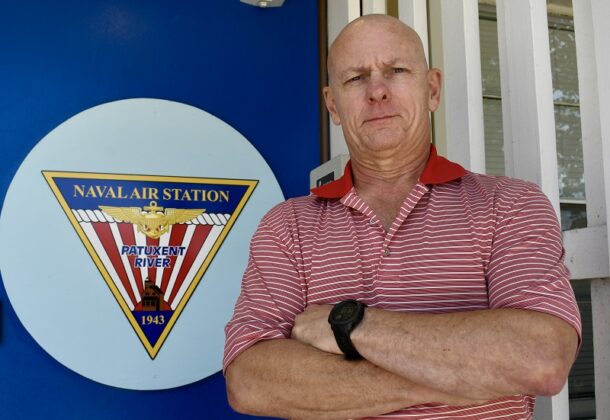Williams Guides Pax to High Marks on Explosives Safety

Kim Williams, NAS Patuxent River explosives safety officer.
NAS Patuxent River’s vision is simple – to sustain the Naval Aviation Enterprise’s combat edge over US adversaries. The mission partners at Pax River are hard at work every day on the research, development, test, and evaluation that ensures warfighters have the necessary equipment to safely and reliably take the fight to the enemy.
Making sure ordnance is safely maintained and only detonates when it’s supposed to is the job of Kim Williams, Patuxent River’s explosives safety officer.
The responsibilities of the ESO are to ensure that all personnel on board the installation – including all tenant commands and activities – who handle or store arms, ammunition, and explosives material are properly trained and in compliance with all DoD, Department of the Navy, and other federal, state, or local regulations.
These regulations are varied.
On any given day at Pax River you can find Williams on inspection tours or in conference with mission partner explosives safety representatives ensuring the safe handling, maintenance, and storage of the most volatile materials on the base. His approach is meticulous, and he relies on a two-fold approach of adherence to instruction and trust in his team of tenant command representatives.
“I work with the various tenants, including several DoD contract companies, by hosting monthly meetings to provide training and discuss any new or revised requirements, including changes to any manuals or directives,” Mr. Williams said. “I also conduct a couple of explosives safety self-assessments for each command, activity, and contractor companies during the year. These assessments are basically internal explosives safety inspections, and I use various personnel from different commands and activities to get as comprehensive an assessment as possible.”
This approach led to Pax River receiving the highest grade possible of “satisfactory” on the safety inspection in June, with 25 total discrepancies, down from the 75 received in 2013 prior to Williams becoming the ESO.
“We had a few discrepancies against some of the older explosives safety site approvals, primarily in the documentation as loaded in a new database, and some documentation discrepancies in a few of the other programs,” he said.
There are the 10 programs that are inspected: Explosives Safety Administration and Management, Facility Certification/Master Planning, Ammunition and Explosives Qualification/Certification and Training, Standard Operating Procedures, Ammunition and Explosives Facilities and Operations, Lightning Protection/Grounding/Emissions control, Material Potentially Presenting an Explosive Hazard/Ranges, AA&E transportation & equipment, AA&E physical security, and Ammunition and Explosives Inventory Management.
Mr. Williams’ experience in explosives safety, and encyclopedic knowledge of instruction, seems natural; but it was honed over a 30-year Navy career that saw him rise to the heights of the Navy’s aviation ordnance community. And he credits his time in uniform with teaching him the importance of knowing instruction and how to work with different communities to ensure an effective safety program.
“I am a retired CW04 Aviation Ordnance Officer, and my Navy career involved assignment to several different commands to include Attack, Fighter, and Strike Fighter Attack squadrons with the A-6, F-14, F/A-18C, and FA-18F, as well as a Carrier Air Wing staff, intermediate maintenance and even recruiting duty,” he said. “My active-duty experience has been invaluable in not only understanding requirements and knowing how to interpret them but more importantly in how to train personnel and how to assess command capabilities.”
And it is this experience that has led him to the role he serves in today. Williams said that while explosives safety might not be on the minds of most in their day-to-day lives, the importance of his program ensures that those in charge of AA&E materials don’t have to worry about the “what ifs” on his watch.
This article was written by Patrick Gordon of the NAS Patuxent River Public Affairs Office.






















